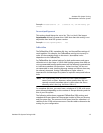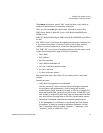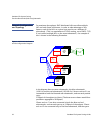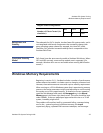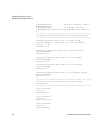StorNext File System Tuning
The Distributed LAN (Disk Proxy) Networks
StorNext File System Tuning Guide 21
It is best practice to have all SNFS Distributed LAN clients and servers
directly attached to the same network switch. A router between a
Distributed LAN client and server could be easily overwhelmed by the
data rates required.
It is critical to ensure that speed/duplex settings are correct, as this will
severely impact performance. Most of the time auto-detect is the
correct setting. Some managed switches allow setting speed/duplex,
such as 1000Mb/full, which disables auto-detect and requires the host
to be set exactly the same. However, performance is severely impacted if
the settings do not match between switch and host. For example, if the
switch is set to auto-detect but the host is set to 1000Mb/full, you will
observe a high error rate and extremely poor performance. On Linux the
ethtool command can be very useful to investigate and adjust speed/
duplex settings.
In some cases, TCP offload seems to cause problems with Distributed
LAN by miscalculating checksums under heavy loads. This is indicated by
bad segments indicated in the output of netstat -s. On Linux, the TCP
offload state can be queried by running ethtool -k, and modified by
running ethtool -K. On Windows it is configured through the Advanced
tab of the configuration properties for a network interface.
The internal bus bandwidth of a Distributed LAN client or server can also
place a limit on performance. A basic PCI- or PCI-X-based workstation
might not have enough bus bandwidth to run multiple Gigabit Ethernet
NICs at full speed; PCI Express is recommended but not required.
Similarly, the performance characteristics of NICs can vary widely and
ultimately limit the performance of Distributed LAN. For example, some
NICs might be able to transmit or receive each packet at Gigabit speeds,
but not be able to sustain the maximum needed packet rate. An
inexpensive 32-bit NIC plugged into a 64-bit PCI-X slot is incapable of
fully utilizing the host's bus bandwidth.
It can be useful to use a tool like netperf to help verify the performance
characteristics of each Distributed LAN network. (When using netperf,
on a system with multiple NICs, take care to specify the right IP
addresses in order to ensure the network being tested is the one you
will be running Distributed LAN over. For example, if netperf -t TCP_RR
reports less than 15,000 transactions per second capacity, a
performance penalty might be incurred. Multiple copies of netperf can
also be run in parallel to determine the performance characteristics of
multiple NICs.



